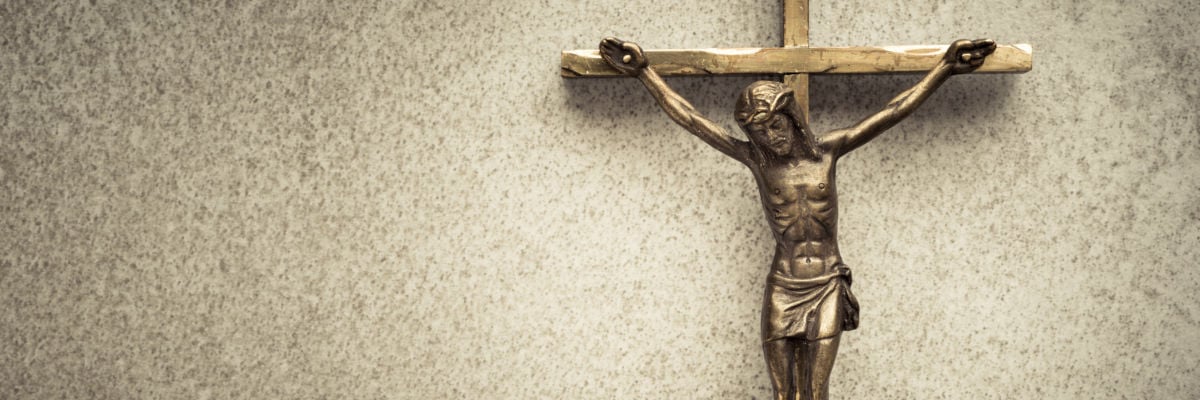
DAY 62
CHALLENGE
“Catholics should not use crucifixes because Jesus is no longer on the cross.”
DEFENSE
The reason that the cross is important is because of the Crucifixion.
This objection has more to do with group identity markers than se- rious theological reflection. Every group has practices that mark its identity with respect to other groups (e.g., circumcision and keeping kosher among Jewish people).
In Western Europe at the time of the Reformation, Protestants be- gan to distinguish themselves from Catholics by certain practices. One was an avoidance of three-dimensional images of Jesus, though two- dimensional images (e.g., paintings and illustrations) were retained. The aversion to three-dimensional images of Christ led to the use of bare crosses, without the figure of Christ.
There is nothing wrong with bare crosses. They were used long before the Reformation, and they are still used in Catholic circles. The reasons for them are not theological or ideological but practical (e.g., a cross may be too small to accommodate a figure of Christ) or artistic (e.g., so that a cross can be specially decorated).
There is also nothing wrong with crucifixes, which depict Jesus hanging on the cross. They are more vivid reminders of what Jesus did for us.
The cross was not important for its own sake but because Jesus died on it. Thus, Protestants also create paintings and illustrations of Jesus hanging on the cross. This reveals that the objection sometimes made to crucifixes is not based on an aversion to depicting Jesus on the cross. A three-dimensional depiction of the Crucifixion is not intrinsically any different than a two-dimensional depiction, which suggests that the Protestant preference for bare crosses over crucifixes is a matter of culture rather than theological principle.
True, Jesus is not on the cross today, but that is irrelevant. Today, the cross on which Jesus hung no longer exists as a single object, and it is questionable whether it ever stood without Jesus on it. Frequently the patibulum (the horizontal bar of a cross) was a separate piece of wood that was raised onto the stipes (the vertical pole) at the time of Crucifixion and then taken down when the victim was dead.
All Christian crosses—whether bare or not—recall the Crucifixion. It’s just a question of how vividly you want to do this.



